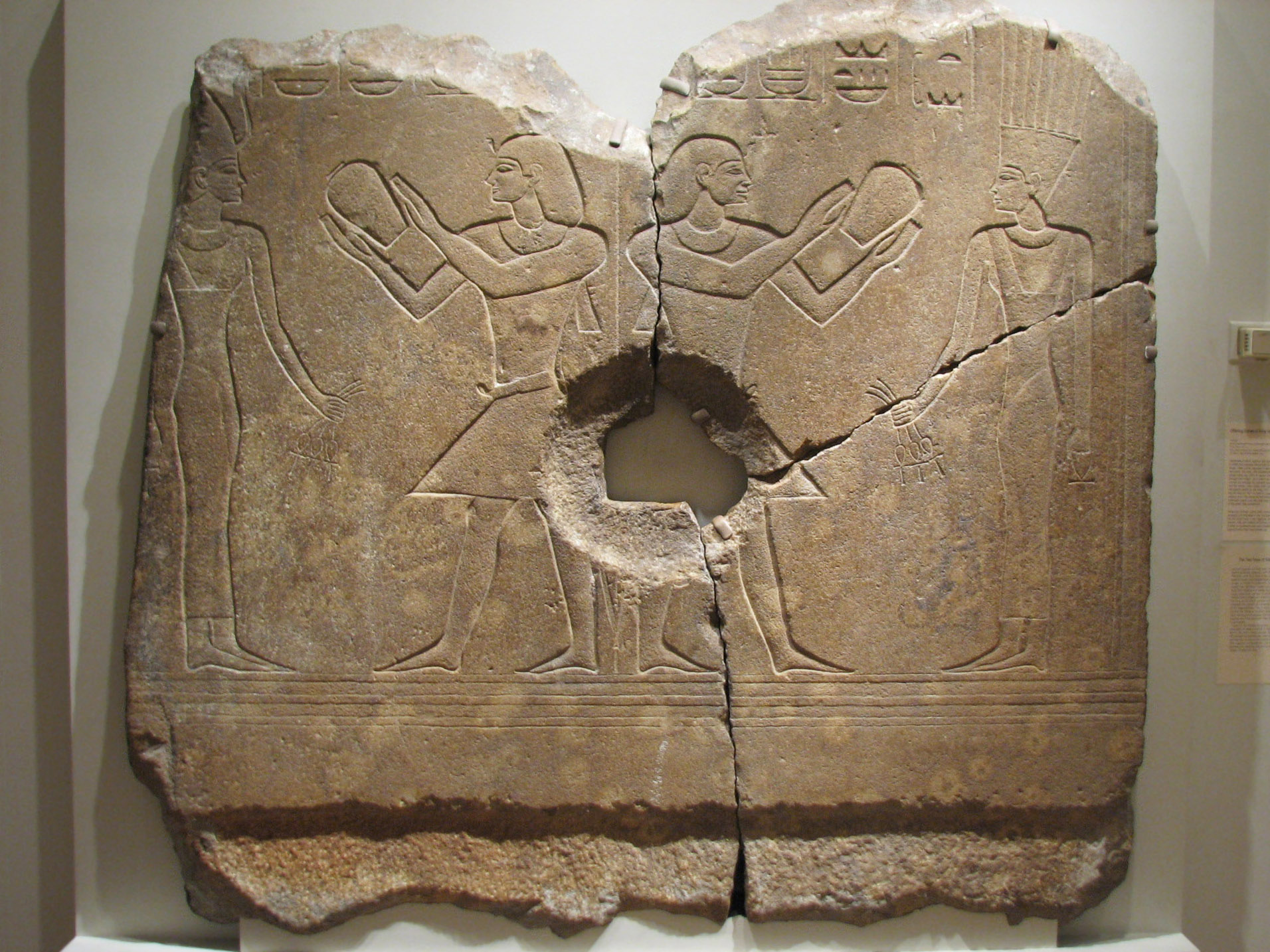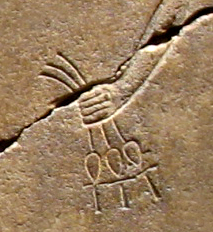Corruption is the enemy of all data, digital and otherwise. The ancient piece above lost some of its data when some medieval numbskills used it for a grinding stone. "Sto-o-o-pid!" you might say. They didn't know any better.
The ancients thought they were engraving that piece to last for all time. How much more vulnerable is the nearly ethereal digital data on which so much of our daily lives depend? It's only as secure as the weakest link in all the computers.
It's a continual battle as we constantly upgrade faltering computers and data storage devices.
At least what's left of Sobekhotep III's data piece is safe now. And the info card author was able to make some surmise about the remaining aspects, crucial data not being at its center:
(From the info card:)
"Sobekhotep III offers vessels to the goddesses Satis (left) and Anukis in reliefs that probably formed part of a naos, or a shrine for a cult image. These scenes represent a basic element of Egyptian temple decoration: the king, who theoretically conducts the cult in every temple every day, offers to deities who, in turn, bless him, and through him, Egypt. As is often true in Egyptian art, each scene conveys its message by standard gestures, the king's emphatic and the deities' more subtle. Both goddesses tender three "life" hieroglyphs (ankh) to the king, their number indicating plurality and the idea of 'all.':




